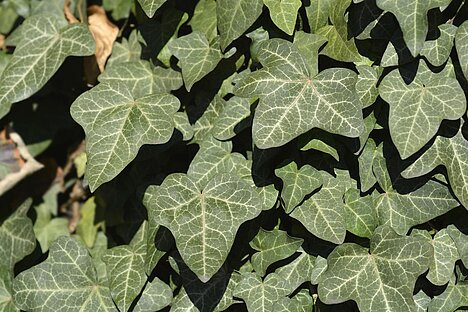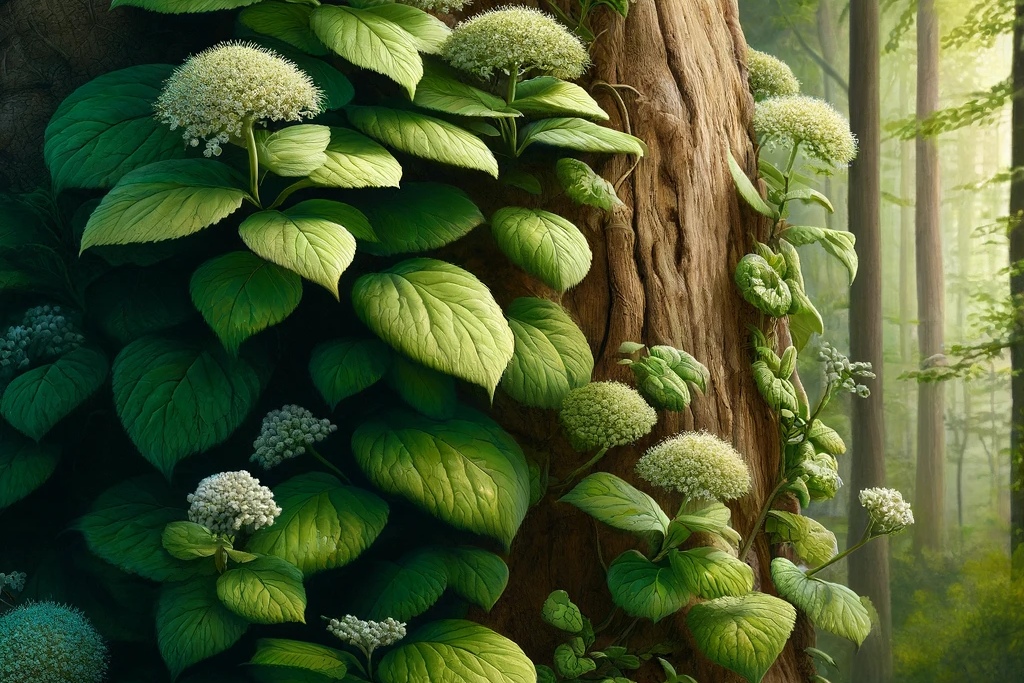Ivy

Ivy is poisonous to dogs
Unfortunately, ivy is poisonous to dogs. Both the leaves and the berries contain saponins, which can lead to symptoms of poisoning. These are
- vomiting
- diarrhea
- salivation
- trembling
- shortness of breath
- Cardiac arrhythmia
- convulsions
- coma
Symptoms can vary depending on the amount and type of ivy. If you suspect that your dog has eaten ivy, you should see a vet immediately. They can give your dog an emetic or activated charcoal to remove the toxins from the gastrointestinal tract. They can also give your dog medication to relieve the symptoms and prevent complications.
Ivy can also cause skin irritation
It's not just eating ivy that can be dangerous for dogs. Contact with the plant can also cause skin irritation. This is because ivy also contains oxalic acid, which can cause redness, itching or blistering in sensitive dogs. Dogs with short fur or skin folds are particularly at risk, as they have less protection from the plant.
If your dog has come into contact with ivy, you should rinse it thoroughly with lukewarm water. Avoid rubbing or scratching the affected areas as this can make the irritation worse. If the skin reaction is severe or does not subside, you should also consult a vet. They can prescribe your dog an ointment or antihistamine to relieve the inflammation.
Ivy also has good properties
Despite its toxicity, ivy also has positive properties. In naturopathy, it is used as a medicinal plant for various ailments. For example, it has an expectorant and antispasmodic effect on the respiratory tract. It can therefore help with coughs or bronchitis. It also has an anti-inflammatory and wound-healing effect on the skin. It can therefore help with eczema or ulcers.
However, you should never try to give your dog ivy yourself. The dosage and preparation of ivy is very difficult and can quickly lead to an overdose. In addition, some dogs may be allergic to ivy or interact with other medications. If you are interested in a natural treatment for your dog, you should always seek advice from an experienced veterinary practitioner.
Ivy is a beautiful plant, but not a good choice for dogs
Ivy is a plant with advantages and disadvantages for dogs. It is poisonous and can cause serious poisoning or skin irritation if ingested or in contact with it. However, it also has healing properties and can help with certain ailments. However, you should never try to give your dog ivy yourself.
If you notice any signs of hypersensitivity or poisoning in your dog, you should see your vet immediately. We are not a substitute for a vet, but we try to be as accurate as possible. Every dog reacts differently and we recommend you get a second opinion or consult your vet if in doubt.
Stay healthy and take good care of your four-legged friend!😊
Similar to Ivy
The climbing hydrangea(Hydrangea anomala subsp. petiolaris) is a deciduous climbing plant known for its ability to climb surfaces with adhesive roots and grow up to 15 meters high. In early summer,...
The wild grapevine, also known by its botanical name Vitis, is a plant species found in many parts of the world. It climbs and twines up trees, fences and other structures and is known for its...
Clematis is a genus of around 300 species of perennial plants from the buttercup family. They originally come from the temperate zones of the northern hemisphere, but are now found all over the...
Garden honeysuckle (Lonicera caprifolium) belongs to the honeysuckle family (Caprifoliaceae) and is native to southern Europe and North Africa. It is a woody perennial plant that can climb up to 10...



